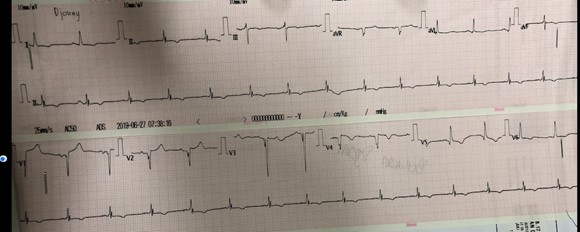Lots of interesting abstracts and cases were submitted for TCTAP 2021 Virtual. Below are accepted ones after thoroughly reviewed by our official reviewers. Don’t miss the opportunity to explore your knowledge and interact with authors as well as virtual participants by sharing your opinion!
TCTAP C-069
Presenter
Christian Sunur
Authors
Christian Sunur1, Harry Pribadi1, Steven Setiawan1, Janry Pangemanan2, Agnes Lucia Panda3
Affiliation
Sam Ratulangi University, Indonesia1, Sam Ratulangi Uneversity, Indonesia2, Sam Ratulangi University Manado, Indonesia3,
View Study Report
TCTAP C-069
CORONARY - Complications
Rebreaking the Invisible Wall: A Case of Recurrent ISR in Minimal Setting
Christian Sunur1, Harry Pribadi1, Steven Setiawan1, Janry Pangemanan2, Agnes Lucia Panda3
Sam Ratulangi University, Indonesia1, Sam Ratulangi Uneversity, Indonesia2, Sam Ratulangi University Manado, Indonesia3,
Clinical Information
Patient initials or Identifier Number
DB
Relevant Clinical History and Physical Exam
A 55-year-old man came to the emergency room with progressive chest pain over the last 2 days before admission. He was an active smoker with a history of myocardial infarction 5 years ago that was treated with 1 BMS. He had recurrent chest pain 1 year ago and coronary angiography revealed an in stent restenosis in LAD which was treated with POBA, significant stenosis in RCA and LCx that were treated with DES. He had uncontrolled hypertension and dyslipidemia. Hemodynamic was stable on admission.


Relevant Test Results Prior to Catheterization
Previous Coronary Angiography (1 year ago)Left main: NormalRamus intermedius: NormalLAD: In stent restenosis pattern III proximal LAD treated with POBALCx: Discrete stenosis 75 % proximal LCx treated with 1 DES (Cre8 3 x 16 mm)RCA: Discrete stenosis 70 % osteal-proximal RCA treated with 1 DES (Biomatrix 3 x 24 mm)
 coronary angio LCA.wmv
coronary angio LCA.wmv
 Coronary angio RCA.wmv
Coronary angio RCA.wmv
 Post ptca.wmv
Post ptca.wmv
Relevant Catheterization Findings
Left main: NormalRamus intermedius: Discrete stenosis 50% at intermediusLAD: In stent restenosis pattern IV proximal LAD, discrete stenosis 90 % mid LAD treated with 2 DES (Combo Plus 2.75 x 28 mm and Combo plus 3.00 x 38 mmLCx: Patent stent proximal LCxRCA: Patent stent proximal RCA
 Coronary angio LCA2.wmv
Coronary angio LCA2.wmv
 coronary angio rca 2019.wmv
coronary angio rca 2019.wmv
 coronary angio LCA 2019.wmv
coronary angio LCA 2019.wmv
Interventional Management
Procedural Step
Radial access was chosen in this procedure and XB 3.5/6 Fr as guiding catheter was used. Microcatheter or IVUS could not be used due to limited resources in the facility. First, we tried to cross the ISR lesion in LAD with Fighter guidewire but failed to cross the lesion, so we used Asahi Gaia Second guidewire in exchange and it was able to cross total occlusion ISR lesion after multiple attempts. We exchanged the guidewire with Fielder FC to reach the distal segment of LAD because Asahi Gaia second was prone to dissecting the vessel. Asahi Gaia second was used as a backup wire in ramus intermedius. We were able to make sure the wire was in the true lumen and reached the distal segment blindly after we pushed and withdrew the wire multiple times and it was still located in the same tract without any resistance. We predilated the lesion in proximal to mid LAD with Mach 2.50 x 20 mm balloon to 10-15 atm 3 times. Combo plus 2.75 x 28 mm stent was deployed in mid LAD to 14 atm, and Combo plus 3.00 x 38 mm stent was deployed in proximal LAD to 10 atm. Post dilatation with 3.00 x 38 mm balloon stent to 14 atm was done in proximal to mid LAD and coronary angiography evaluation showed TIMI 3 flow result without dissection.
 Fighter failed to asahi success.mp4
Fighter failed to asahi success.mp4
 PTCA LAD.mp4
PTCA LAD.mp4
 PTCA LAD result.wmv
PTCA LAD result.wmv
Case Summary
POBA is not recommended to treat an ISR lesion.IVUS is a mandatory tool to manage ISR complication and to reduce the risk of recurrent ISR.In a minimal setting and lack of resources, the operator’s skill could overcome the lack of microcatheter with careful choice of guiding catheter and wire selections.


